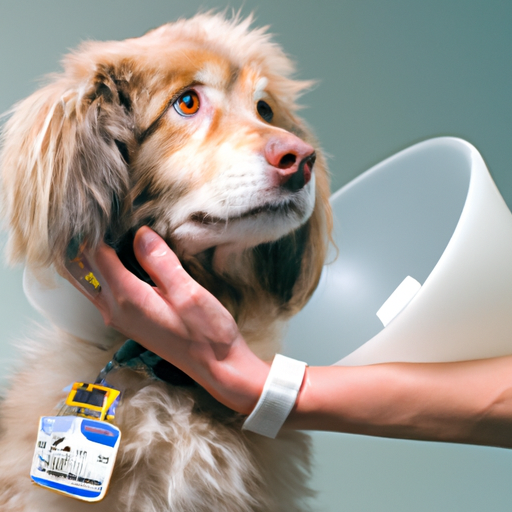Understanding the Purpose of the Cone
The moment you see the sad, confused expression on your dog’s face when the vet slips on the cone—also known as an Elizabethan collar—you might feel a pang of sympathy. But remember, this is for their own good. The cone serves as a protective barrier, preventing your pup from licking or biting at their surgical site, which can lead to infections or other complications.
The Duration of Cone-Wearing
Typically, vets recommend that dogs wear their cones for about 10 to 14 days after spaying. This period allows for the incision site to heal properly. However, this timeline might vary depending on the specific case and how well your dog is healing.
Monitoring Your Dog’s Healing Process
Here are some factors to consider when monitoring your dog’s healing process:
-
Incision site: Keep an eye on the surgical site. There should be no redness, swelling, or discharge.
-
Behavior: Your dog should return to their normal behavior within a day or two post-surgery. If they seem lethargic or refuse to eat, seek veterinary advice.
-
Pain: Your dog might experience some pain after the surgery. However, if the pain persists even after administering prescribed painkillers, consult your vet.
Additionally, you might want to use the following table as a guideline for your dog’s recovery:
| Day Range | Expected Recovery State |
|---|---|
| 1-2 days | Some lethargy, reduced appetite |
| 3-4 days | More active, should be eating normally |
| 5-10 days | Almost normal behavior |
| 10-14 days | Incision should be fully healed |
Alternatives to the Traditional Cone
If your dog is really struggling with the cone, you might want to consider some alternatives:
-
Inflatable collars: These are more comfortable than a traditional cone, but they may not work for all dogs, especially those who are determined to reach their surgical site.
-
Recovery suits: These act like a post-surgical onesie, covering the incision site completely.
-
Soft cones: These are made from fabric and are generally more comfortable than hard plastic cones.
Remember, always check with your vet before trying a different method.
Tips for Helping Your Dog Adjust to the Cone
- Introduce the cone gradually before the surgery if possible.
- Provide lots of praise and treats to create positive associations with the cone.
- Ensure the cone fits well—it should be snug but not too tight.
- Help your dog navigate around the house, especially in the initial days.
Frequently Asked Questions
Q: Can I remove the cone when my dog eats or drinks?
A: Yes, you can remove the cone during meal times but make sure to put it back on immediately after.
Q: Can my dog sleep with the cone on?
A: Yes, your dog should sleep with the cone on to prevent them from licking or biting the incision site.
Q: What if my dog really hates the cone?
A: Consult your vet. They might suggest alternatives like inflatable collars or recovery suits.
Q: How do I know if my dog’s incision is healing properly?
A: The incision should be free from redness, swelling, and discharge. If you notice any abnormalities, contact your vet.
Remember, your dog relies on you during their recovery. Your patience, understanding, and care can make a world of difference to them. With time, they’ll be back to their happy, energetic selves—no cone in sight!



